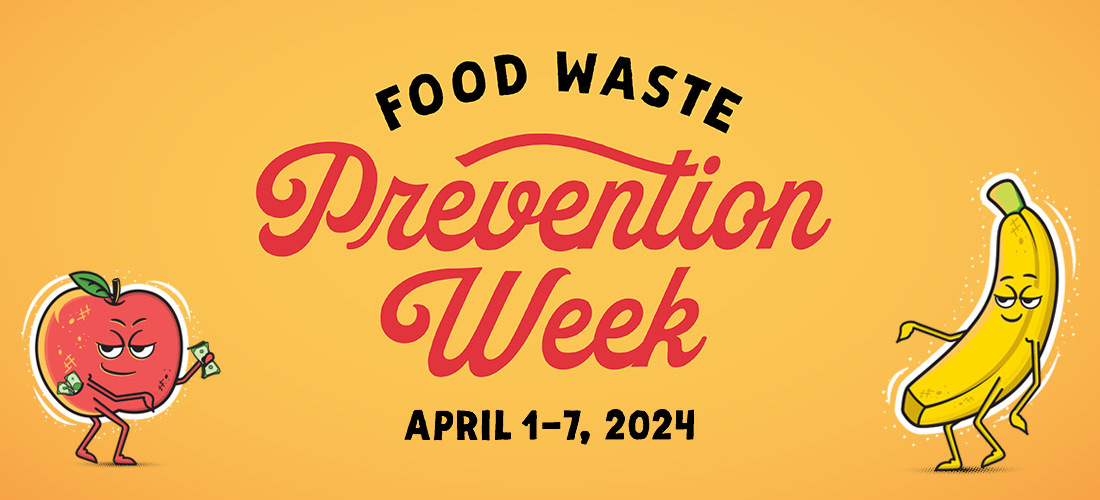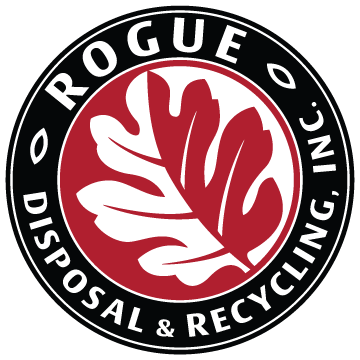Food for thought: Simple things you can do to cut food waste from your daily routine.

Food Waste Prevention Week is a week-long campaign to raise awareness and inspire everyone to reduce food waste at home, at work and in our communities. Statistically, up to 35% of all food goes uneaten. Imagine bringing home three bags of groceries every week and throwing one of them away, unused. According to the nonprofit Earth.Org, the food wasted by the United States alone each year would provide nearly 130 billion meals. And despite increasing awareness, the problem is growing — with the amount of food waste tripling over the past five decades. That translates into an estimated cost of as much as $218 billion in wasted food every year.
Now for the “what can I do?” news. Roughly 37% of all food waste happens at home. So while the big-picture statistics may seem overwhelming, there are simple things you can do every day to help reduce food waste as part of your daily routine. You can make a difference!
Everyday ways you can reduce food waste
The folks at Food Waste Prevention Week have created a comprehensive website, complete with tips, things to do, downloadable resources and more. The goal is to make reducing food waste as easy as possible, giving you the information and real-world steps you need to incorporate simple changes to your everyday routine.
Stakeholders for this national initiative include the Food Conservation Alliance and the State of Oregon Department of Environmental Quality, along with the Washington Department of Ecology, the World Wildlife Federation, Food Systems Lab, ReFed, National Resources Defense Council, Food Recovery Network, Commission for Environmental Cooperation, and well over 600 regional, state and local organizations across 48 states and 11 countries. All joining together to help move the needle on reducing food waste.
One of the key pages on the Food Waste Prevention Week website is the “Learn” page. Here, you’ll find information on why reducing food waste is so important and ways you can get started.
Learn why food waste prevention is so important:
- It saves money — A typical family of four can save an average of $1500 per year
- It conserves resources — Land, water, energy and human resources are used to grow, package and transport food
- It improves food security — Safe and nutritious food that is currently thrown away could be used to feed those facing food insecurity
Discover what you can do:
- At home
- At the grocery store
- At work
Get food storage tips for some of your favorite fruits and vegetables:
- Temperature matters: Learn which fruits and vegetables want to be kept cold and dry, which ones want to be kept at room temperature, and which ones want to be cold and moist
- Turn off the light: Learn which fruits and vegetables want to be kept in the dark in order to keep them fresh
- Keep me separate: Learn which fruits and vegetables need to be stored separately, away from other fruit and/or vegetables
- Remove the bad ones: Learn which fruits need to have the moldy/rotten/spoiled ones quickly removed to keep the rest from going bad
- Freeze now to use later: Learn which fruits and vegetables can be frozen to be enjoyed later... and what do you need to do to ensure they are correctly frozen

You’ll also find webinars to join, resources to download, and an in-depth blog post about preventing wasted food, written by experts from the Natural Resources Defense Fund:
- Webinars: Throughout the week (and beyond), you can attend a veritable menu of webinars. Choose from sessions such as Meal Planning to Reduce Food Waste in 10 Simple Steps, Food Waste Prevention: No Food Is Left Behind, Food Waste Prevention Hacks for Home and School Lunches and more. Click here for a complete listing of webinars and links to registration.
- Downloadable Resources: Click on any of the 10+ links to go directly to a printable, downloadable resource. This is your gateway to resources including Food Waste 101: Understanding the Basics, the USDA’s FoodKeeper app, the EPA Waste Food Scale, and Home Food Preservation from our own Oregon State University Extension.
- Expert Blog: Preventing Wasted Food Across the Food Chain: This well-researched article breaks down food waste by category (residential, retail and food service, farms, and manufacturing) and provides side-by-side problems and solutions to the challenge of waste food in each of these sectors. Read the blog post here.
- Resources for K-12 Schools: Looking for creative, impactful ways to get your students involved in Food Waste Prevention Week? How-to ideas galore, including entering an art contest, holding a school food waste audit, taking an online pledge and more are all right here, along with in-class curriculum and food waste resources.
- Resources for College Campuses: If you’re interested in getting your school involved in Food Waste Prevention Week, the site provides several ways to help educate and inspire everyone on campus. Register as a partner and explore the ways to get involved here.
To learn more about Food Waste Prevention Week, visit the website.
Share This
